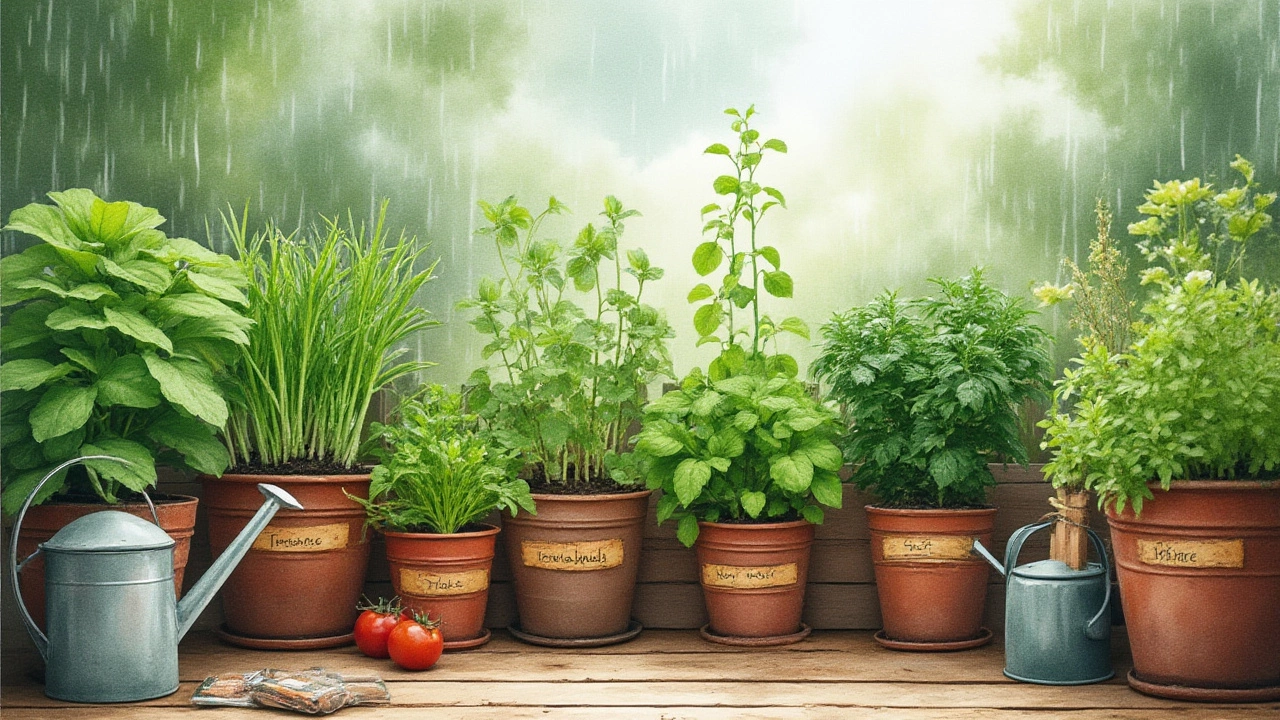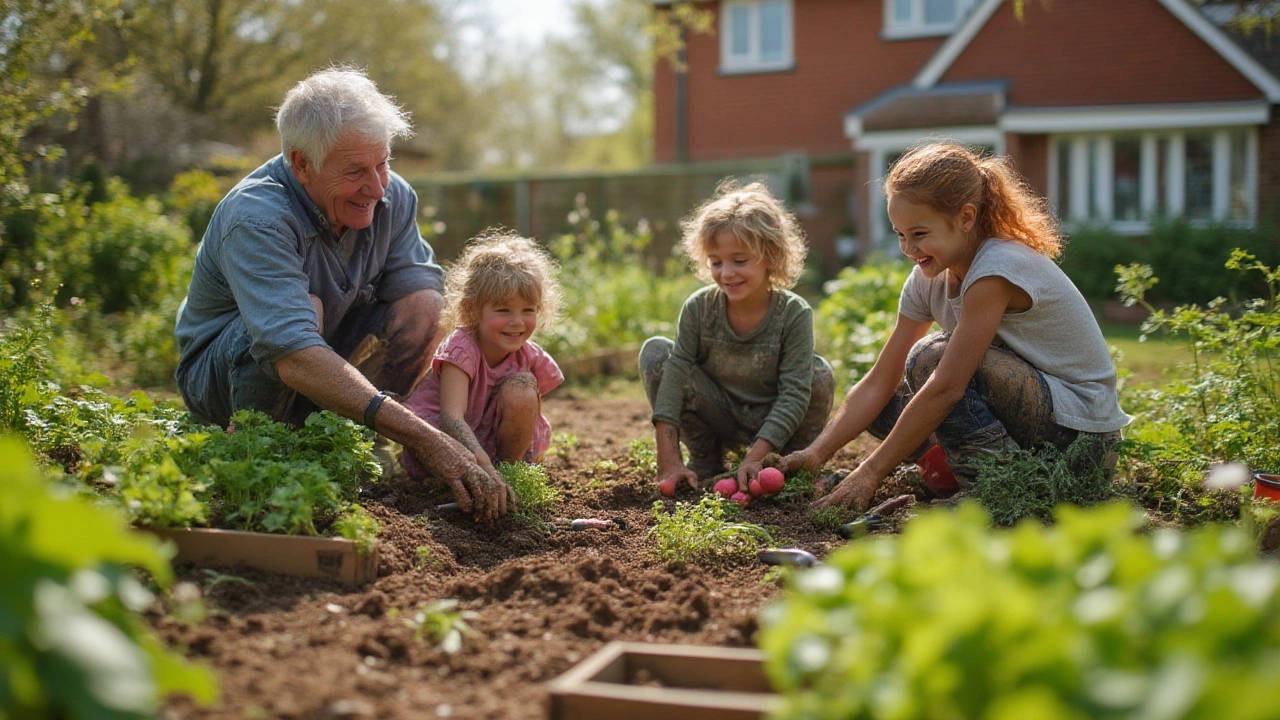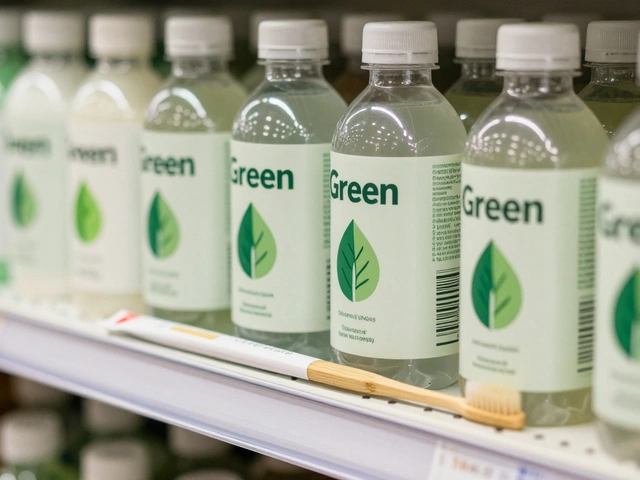Anyone who’s ever held a seed and dreamed about fresh tomatoes for summer salads or crisp carrots for lunchboxes knows that starting a veggie garden can feel both thrilling and terrifying. Maybe you’ve killed more houseplants than you care to admit (ahem, Luna the dog definitely dug up my basil seedlings once), but growing vegetables outside—where sunlight, rain, and your not-so-discreet dog all have a say—brings its own challenges. But what if I told you some vegetables practically do half the work for you? Even if you’re totally new, there are crops determined to survive whatever British weather (or forgetfulness) you throw at them. Ready to dig in and find out which plants make your first growing season a smashing success?
Why Some Veggies Are Naturally Easier for Beginners
If you picture vegetables as picky little divas demanding perfect soil, greenhouse conditions, and precision watering routines, well, that’s only partly true. The secret is that a handful of veggies have evolved to take neglect, weird weather, and the odd dog paw in stride. These beginner-friendly vegetables have tough seeds, broad root systems, or crazy-fast growing habits that let them shrug off beginner mistakes. Choose wisely, and even brand-new gardeners see green results, often within weeks.
Data from the Royal Horticultural Society highlights a few practical realities for newcomers. For example, root vegetables and leafy greens like lettuce and radishes have some of the highest germination rates even when planted by hand—not fancy, just a simple push into the soil. Cucumbers and beans, once the weather warms, grow so aggressively you’ll feel like their personal cheerleader every morning. The real headache? Some vegetables, like celery or cauliflower, need seriously specific temperature and moisture—best left for a second-season challenge.
Next time you stroll through a local allotment, you’ll notice something: seasoned growers rarely waste their prime space on fussy vegetables. Yes, they’ll try tomatoes, but look at the borders and corners—those are packed with peas, spring onions, and lettuces. These workhorse veggies set seeds with minimal fuss, fend off common pests, and produce impressive harvests over a long stretch. Fun fact: lettuce was one of the first veggies ever grown in space. If NASA trusts it for low-maintenance salads 400km above Earth, you can probably manage a row.
Speaking of manageable, here’s something else: most easy veggies don’t require posh raised beds. A few bags of compost, big flowerpots, or even reclaimed buckets can transform into mini-plots as long as there’s sun and drainage. Whether you’re working an allotment, a back patio, or a balcony, the right beginner veg will happily oblige. And if your curiosity runs wild like my parrot Kiwi with a new toy, take comfort in knowing you can plant several varieties together—a classic technique called companion planting—which saves space and even scares off pests without resorting to pesticides (marigolds and carrots, for example, are best mates).
Now, before you imagine every easy-growing veggie is flavorless or boring, get this: some of the juiciest, most satisfying crops come from these easy starters. The trick is, pick the right plant for your spot and follow simple care routines. Which brings us neatly to the next part—what should you actually sow?
The Best Vegetables for Total Beginners
Let’s break through the noise and get to what matters: what are your best bets for growing success on your first attempt? Certain vegetables are the MVPs of the beginner’s patch—reliable, quick to grow, forgiving, and genuinely tasty. Here’s my own short list, made with both garden failures and triumphs in mind (I’ll never forget my first bush bean harvest, even Luna seemed impressed!).
- Radishes: Start-to-finish in three to five weeks, radishes are unbeatable for instant gratification. Pop seeds into shallow soil, keep damp, and they’ll sprout in days—even if the weather is chilly. Try extra-crunchy French Breakfast or classic Cherry Belle for color and snap. Kids love pulling these up; they look like little treasures.
- Lettuce: Loose-leaf lettuce is basically foolproof and works in anything from window boxes to big garden beds. Cut-and-come-again varieties like ‘Salad Bowl’ let you snip leaves and wait for more, so you get weeks of harvest. Lettuce even grows well in partial shade, ideal for tiny city plots.
- Spring Onions (Scallions): These skinny, zesty onions don’t need much space. Plant closely together, water often, and watch them pop up fast—perfect for sandwiches and salads. They’ll even regrow if you snip off just the tops.
- Peas: Peas set a new standard for rewarding vegetables. Start seeds indoors or directly outdoors as soon as spring warms up. Tall or bushy varieties climb up strings or supports and reward with sweet pods in late spring and early summer. No greenhouse needed.
- Carrots: As long as your soil is loose and stone-free, carrots are easy. Sow thinly, keep moist, and thin out once plants appear (feed the tops to pets if you have them—Kiwi adores carrot leaves). Harvest when roots reach a finger’s width and bright color.
- Courgettes (Zucchini): For pure drama, nothing beats courgettes. One plant produces enough fruit for a small army. Start seeds indoors in May or directly after frost. They sprawl, so leave room, and pick courgettes small for the best taste.
- Beans (Bush or French): Bush beans don’t need staking and mature quickly once the weather warms. Beans return nitrogen to the soil, helping the next round of plants, and offer a bumper crop in mid-summer.
- Spinach: Early sowings work brilliantly, especially for salads. Choose bolt-resistant ‘Perpetual’ for an even easier time—regular picking encourages extra growth.
- Beetroot: Vibrant, sweet roots and edible leaves make beetroot a two-in-one for the kitchen. Space seeds 10 cm apart and keep soil damp during sprouting.
It’s all about matching each vegetable’s personality to your plot, habits, and taste buds. If you’re prone to forgetting your patch for a week, radishes or spinach will forgive you. If you love tending daily, try bush beans or lettuce. Don’t be afraid to experiment—a little risk turns your garden into a living classroom, and trust me, the wins easily outnumber the losses when you start with these picks.
Here’s a quick comparison of top beginner vegetables, using data from recent RHS and Allotment Society surveys:
| Vegetable | Avg. Germination Rate | Time to Harvest | Yield (approx.) |
|---|---|---|---|
| Radishes | 90% | 25 days | 100-200g per row meter |
| Lettuce | 98% | 30-50 days | 300-500g per row meter |
| Peas | 85% | 80 days | 600g per plant |
| Carrots | 80% | 70 days | 400g per row meter |
| Courgette | 94% | 45 days | 4-8kg per plant |
| Bush Beans | 92% | 60 days | 1.5kg per plant |
That’s a lot of food for just a handful of seeds and a bit of dirt! Peas or beans can climb, maximizing small garden spaces or growing up fences, while speedy radishes make perfect gap-fillers between slower crops. It’s proof that with simple choices, even total newbies can harvest enough for real meals.

Simple Growing Tips for a Thriving Vegetable Patch
So, you’ve picked your beginner-star vegetables—what now? Here are no-nonsense steps for a healthy patch, even if you’ve never gardened before. Follow these, and even a first try looks impressively productive come harvest. And I mean real yields, not just a single tiny carrot for Instagram.
- Start with good soil: Loose, rich soil helps seedlings sprout fast. Blend in shop-bought compost or garden manure before sowing. Avoid planting in places where water pools after rain—roots hate wet feet.
- Use simple tools: You honestly don’t need anything fancy. A trowel, watering can, and a forked stick serve most crops just fine. Even my gran used a broken kitchen knife to harvest lettuces.
- Water wisely: Steady, shallow watering works better than rare, deep soakings. Early morning is great—leaves dry out quickly afterwards, so diseases stay away. If you miss a day—or three—just get back on it; these veggies forgive.
- Keep weeds at bay: Weeds rob nutrients from crops. Flick them out whenever you spot new green invaders, especially in the early weeks. It’s a five-minute job that saves headaches come harvest.
- Thin your seedlings: Crowded plants fight for sun, stunting growth. After sprouting, gently pull up extras so remaining seedlings stand apart—check packet instructions for perfect spacing.
- Watch for pests… a bit: Yes, slugs love tender leaves, but a beer trap or simple copper ring stops most. Birds eyeing your young shoots? A bit of mesh or netting fixes that. My parrot Kiwi would probably try to share their dinner if I let him.
- Harvest often: Picking veggies young and fresh keeps plants productive for longer. Snip leaves, pull roots as soon as they look edible, and let the rest continue growing for future meals.
- Label everything: Especially if you’re excited and plant dozens of seeds at once—markers save a lot of "what did I put here?" moments two weeks later.
Take notes as you go. Jot down what worked, what was tasty, and anything you’d try differently. Even seasoned gardeners do this. Don’t let the idea of perfect rows or magazine-worthy gardens stop you. It’s about having fun, eating better, and maybe saving a bit on your supermarket bill. If you mess up one patch, try again; seeds are cheap and the learning curve is forgiving with starter vegetables.
And remember, plants aren’t just to feed you—they’re a magnet for bees, butterflies, and, if you let your patch get shaggy, neighborhood hedgehogs looking for shelter or dinner. Since growing my own veggies, I’ve seen way more pollinators on my patio, which actually boosts flower and fruit production next season. It’s like the whole garden pays it forward.
Why Growing Easy Vegetables Is Worth It
There’s something—honestly—kind of magical about tasting food you grew yourself, even if it’s just a scraggly carrot or a handful of beans. It makes you hyper-aware of the season, the rain, and that silly sense of pride you feel showing off a salad that didn’t come from a shop shelf. I know novice gardeners who started with a single pot of lettuce on their kitchen sill, and by the next summer were swapping surplus veggies with neighbors over the fence. Beginner-friendly vegetables create this contagious excitement; success breeds more planting, and suddenly you’ve got a whole community of growers trading tips, seeds, and recipes.
Another truth? Learning with easy crops will teach you pretty much everything you need about growing tougher vegetables later. If you start with radishes and lettuce, you get a solid handle on soil, watering, and light. When you’re ready to level up—maybe try those infamous finicky tomatoes or even blueberries—you won’t feel out of your depth. And if you stick with only the easy ones forever, your dinner table still looks impressively colorful year-round, no shame in that at all.
Growing your own food hooks you into the most classic human tradition there is. It’s practical too: during the mad supermarket runs of 2020, gardeners who sowed lettuce or carrots in March were still munching their way through homegrown leaves in June when shelves were bare. Even with price hikes and food shortages, a prime patch barely costs a few pounds unless you go wild with rare seeds.
I can’t promise you’ll turn into a plant whisperer on day one. Sometimes seeds won’t sprout (thanks, cold rain), or a surprise freeze sets you back. Still, every mistake is just a nudge to do better next time—and the next packet of seeds is already waiting. The best part? You don’t need massive time or cash investments. A couple of packets, some borrowed soil, sun, and a half-decent watering can gets you started. Who knows, next year you’ll be chasing after heritage peas or growing so many beans you’re pawning off bowls to friends. So jump in, try the easy vegetables, and let your little patch surprise you.










